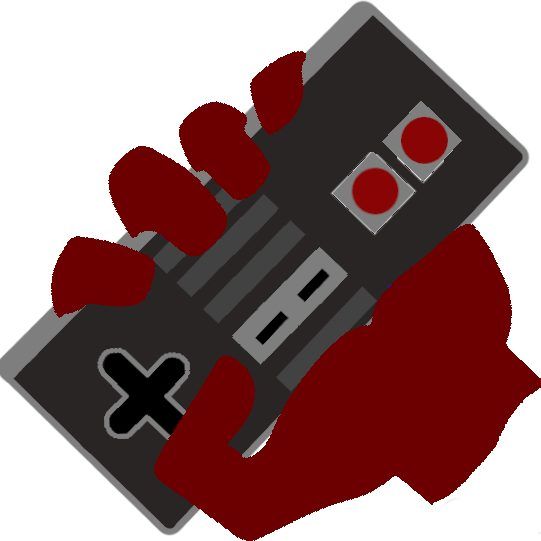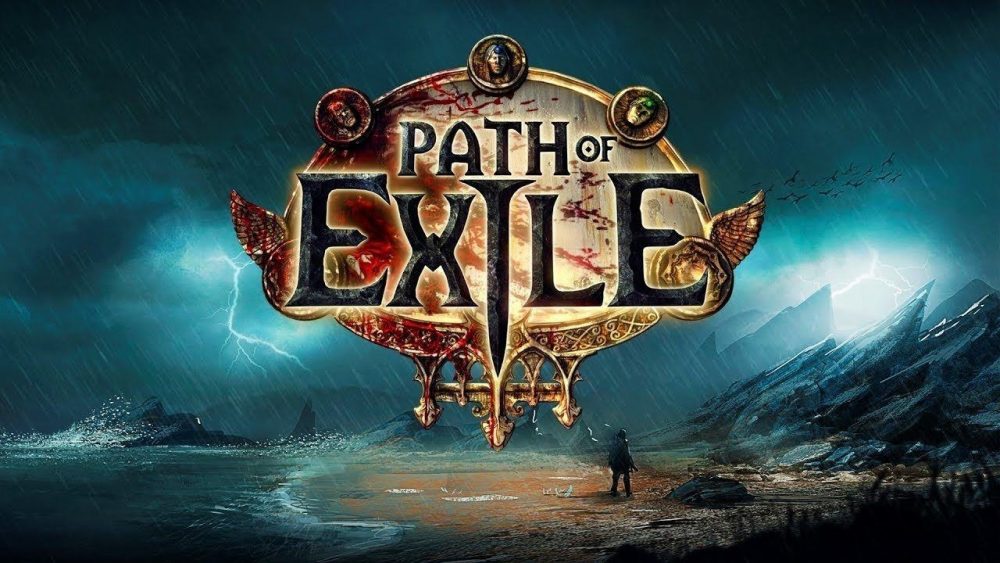by Civenge
Introduction
Welcome to Path of Exile! If you are reading this guide, congrats on not playing Diablo! Path of Exile (PoE) is an Action Role Playing Game (aRPG) created by Grinding Gear Games (GGG). PoE is free to play and can be found here on steam: Download Path of Exile. As of the first version of this guide, I have almost 4,000 hours into this game according to Steam, but realistically over half of those hours are afk as I do other things waiting for trades. I’ll get more into that later. If you have questions about PoE not covered in this guide, you can find me over at https://www.twitch.tv/civenge. Also note that this guide is not 100% exhaustive for PoE content, because the game has so much depth it would be the length of a book. With that done, welcome to the harsh land of Wraeclast, Exile.
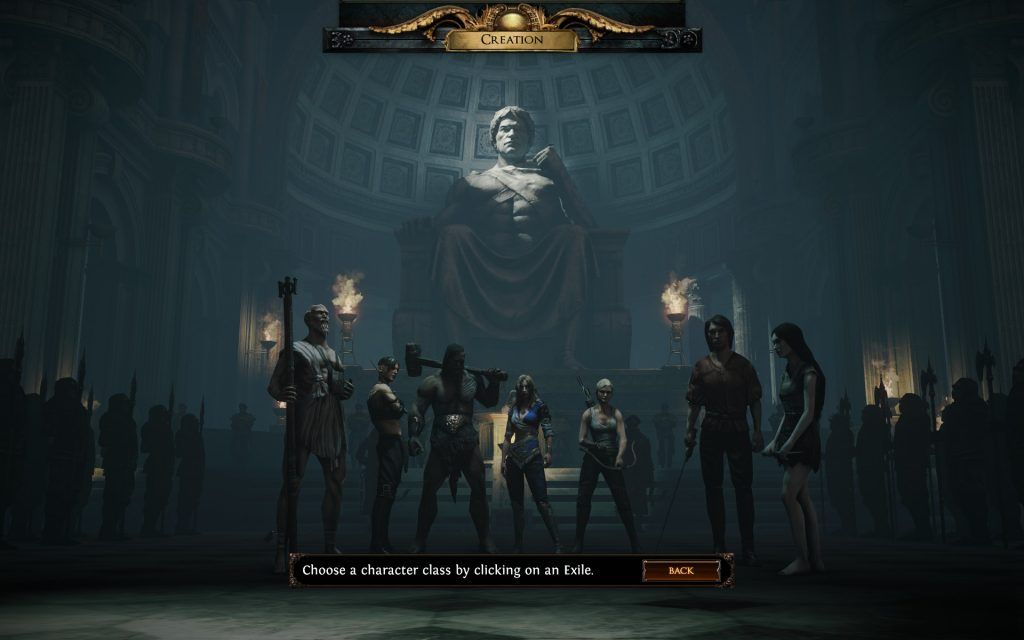
In Path of Exile you play solo or in a group of up to 6 players, with the objective of leveling up and becoming stronger. It sounds simple, right? Well not really. PoE is a very complicated game. From the character creation page above, you are placed into one of the most complex (on the surface) skill tree system of any aRPG out there. For now, just understand that other than aesthetics and some minor stat differences, the characters are all the same. The real main difference is character creation determines the starting location on the skill tree and ascendancy options later. The skill tree is a vast network of nodes, over 1,300 as of the time of writing this guide, and is probably the number one reason players stop playing this game. I did talk about complexity, so let’s dive a little bit more into the game.
The Skill Tree

Above you’ll see a screenshot of a summoner build that I have done in one of the previous leagues. The detail isn’t what is important here, what I want to convey with this image is that even at maximum level, realistically you may only spend about 120 skill points, out of over 1300. This means that if you want to be successful at PoE, you need to think from the ground up. The best advice I can give a new player is to visit the class forums located here: https://www.pathofexile.com/forum, click on “Classes / Builds” and start looking at what people have done before you. There are a ton of well written, complete class guides for new and veteran players alike.
Game Modes
Standard: The permanent league that all non-hardcore characters go to, or any hardcore character instantly goes to if they die.
Hardcore: The permanent league that all hardcore characters (who haven’t died) end up in after the temporary league ends.
Temporary Leagues: About every 3 months, a fresh league starts with all new characters, new rulesets and a fresh economy.
Solo Self Found (SSF): A variant of the above, except you are truly solo with no grouping or trading options. You do have the option of a one-way migration from SSF to the parent league if you change your mind later and want to play with other people.
Character Sheet
Stats
So now that you are thoroughly overwhelmed by the massive skill tree, let’s break the game down into more bite size pieces. For primary stats in this game, we are looking at:
- Strength: Increases flat health and % melee physical damage.
- Dexterity: Increases flat accuracy and % evasion ratings.
- Intelligence: Increases flat mana and % energy shield.
So that already raises questions, what is energy shield, health, etc? Well let me break it down even further. In PoE, you have a life meter and mana meter. When you run out of life you die, and you can’t cast spells if your mana is empty. Pretty straightforward. BUT, there are other things at play here. Energy shield can be thought of as a buffer that protects life for the most part, I’ll talk about exceptions below. One other thing to note is that there is usually an exception every rule in Path of Exile.
Defensive Stats

These are the main defensive stats you will be focused on depending on your build. Certain passive skill tree nodes can greatly increase, decrease or make effectively useless these stats. For example, you can get Unwavering Stance on the skill tree which gives stun immunity while having 0% chance to evade. It makes evasion, stun reduction and dodge worthless stats for your build. Here is a list of what I classify as the defensive nature, in the order of which they apply:
- Evasion: The % chance to not take damage from an attack.
- Dodge: The % chance to not take damage from a spell or attack.
- Block: While having a shield, staff or while dual wielding, this is the % chance to not take damage from attacks. It is split separately between melee attack and ranged attacks.
- Resistances: % damage reduction from the associated damage. **Elemantal resistances are the most important defensive thing to keep maxed out at 75%**
- Physical
- Chaos
- Fire
- Lightning
- Cold
- Energy Shield: A recharging buffer that protects health from all damage types except chaos, begins to recharge after 5 seconds of not taking damage.
- Health: Run out and you die.
Offensive Stats
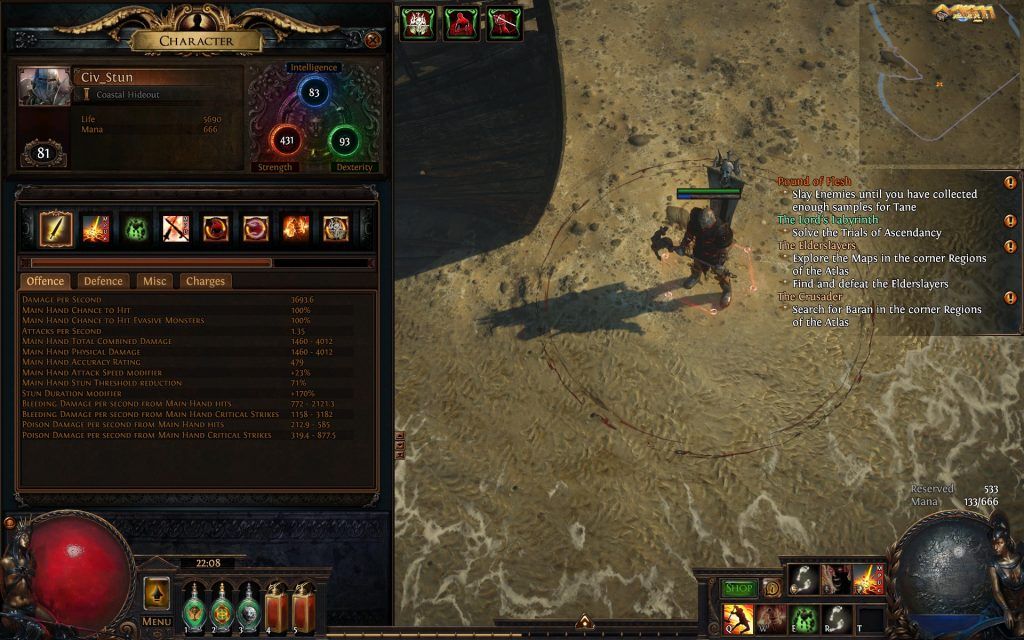
These are the main offensive stats you will be focused on depending on your build. Certain passive skill tree nodes can greatly increase, decrease or make effectively useless these stats. For example, you can get resolute technique on the skill tree which gives 100% accuracy rating and 0% critical strike chance. It makes accuracy rating, critical strike chance and critical strike multiplier worthless stats for your build.
- Accuracy: Used for melee and ranged attacks to determine hit rate, very important for critical strike builds because it rolls once for hit and then rolls again for crit. For example, if you have a 90% hit chance and 50% crit chance, your effective critical strike chance is 0.9(roll for hit)*0.9(roll for crit)*0.5(crit rate)=40.5% chance to crit on any given hit. In this case increasing accuracy will most likely give you a higher effective critical strike chance than getting additional critical strike chance on gear.
- Critical Strike Chance: % chance for a critical strike for attacks or spells.
- Critical Strike Multiplier: Determines how hard your critical strikes hit, the base is 150% . So when you score a critical strike, by default it will hit for 150% of what a regular hit would.
- Attack Damage: Increases the damage of any skill with the attack tag, can be either flat damage or % damage and can be specific to a damage type (such as fire or cold) or generic spell damage that affects all damage types.
- Spell Damage: Increases the damage of any skill with the spell tag, can be either flat damage or % damage and can be specific to a damage type (such as fire or cold) or generic spell damage that affects all damage types.
Charges
Charges are a limited duration bonus effect that can be generated on a character through various means. Each character has a base limit of 3 charges of each type, so between power, endurance and frenzy charges, the character has a base maximum of 9 total charges. Using specific gear, ascendancy points and passive skill tree nodes, each of these limits can be raised or lowered.
Power Charges increase the base critical strike rating by 40% per power charge. This stacks additively with other sources of increased critical strike rating.
Endurance Charges increase physical and elemental resistances by 4%, providing a significant defensive boost. Flat % based physical resistance is tough to achieve in PoE.
Frenzy Charges increase attack and cast speed by 4%, and grant 4% MORE damage per charge. More damage modifiers stack multiplicatively, providing “more” of a benefit than “increased” damage modifiers.
Damage Sources
Damage can be scaled generally by matching with the appropriate support skill gem tags, gear or passive skill tree points. Below you will discover the difference between the 4 primary damage sources and how they differ from one another.
Attack
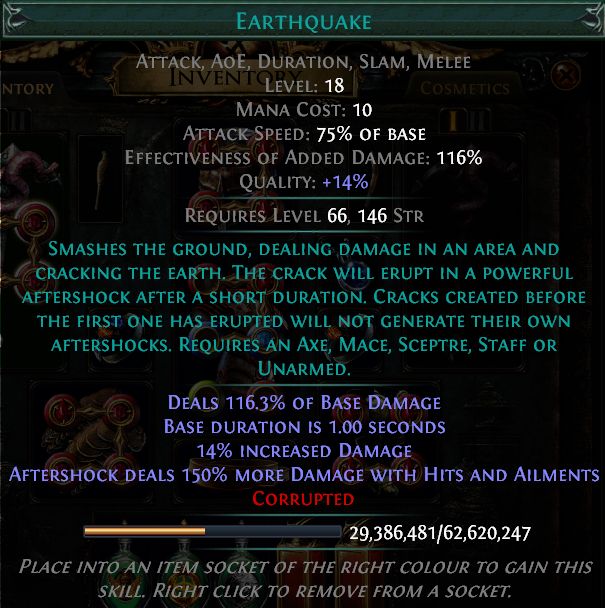
Attack is a gem tag as listed above, along with AoE, Duration, etc. Any skill gem with the “Attack” skill tag will work with the same passive skill tree descriptors, such as: “Increased Attack Speed” nodes. However, Attack can be further broken down into types of attacks, such as: Weapon, Unarmed, Melee or Bow. In the case of the Earthquake skill gem used above, it is a Melee Attack. Any passive skill node or support gem that references “Melee” or more generally “Attack” will further effect this skill. In addition, any support skill gem that has “Hits Enemies” would also work since this skill does hit.
Spell
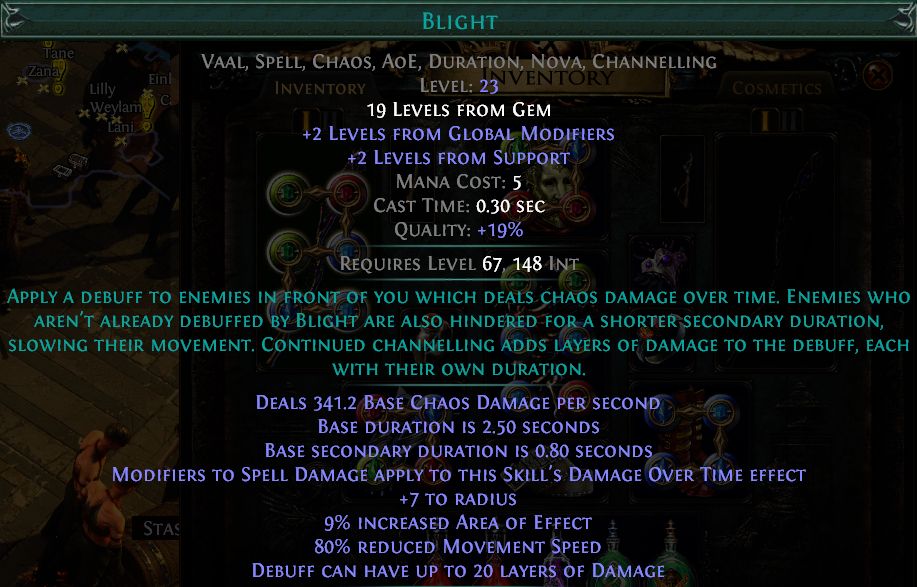
Much like Attack, Spell is another damage source and gem tag. Spells by default have a 100% chance to hit, unlike attacks. Again any skill gem with the “Spell” skill tag will work with the associated skill tree descriptors, such as: “Increased Spell Damage” nodes. However, Spell is further broken down by damage type, such as Chaos in this example, area damage “AoE”, duration, etc. Blight is one of a few spells that doesn’t “Hit” creatures, so modifiers or support gems that “Hit” would not benefit to your Blight skill. In this case, the best way to know if a skill hits or not, is to look at the wiki: https://pathofexile.gamepedia.com/Blight. Since Blight cannot hit, there is no benefit critical strike rating or critical strike multiplier, since that only affects skills that can hit. Also note that chaos damage does not benefit from any general elemental damage increases.
Damage Over Time
Damage over time is another damage type which can be either an attack or spell skill. It is not a “hit” but can be inflicted by sources that hit. The common sources of damage over time are:
- Bleeding: Associated with Physical Damage, and only 1 bleed can be inflicted at a time
- Poison: Associated with Physical Damage, and can have as many applications as you can inflict
- Burning: Associated with Fire Damage sources from critical hits or chance to inflict burning, and only 1 burning can be inflicted at a time
- Cold Damage Over Time: Associated with specific skills such as Cold Snap or Vortex, and only 1 can be inflicted at a time
Damage over time can be scaled through items, passive skill nodes or support skill gems that match either the tag “Damage Over Time” or scaling the base damage such as “Cold Damage” or “Spell Damage” for the case of Cold Snap.
Secondary Damage
Secondary damage is a catch all for damage that doesn’t fit into one of the 3 categories above. An example would be a skill that gives “Bleeding enemies you kill explode, dealing 10% of their maximum life as Physical Damage” ascendancy node for the Gladiator ascendancy. The physical damage in this case can be scaled, but it is a secondary effect of a monster with bleeding who dies and explodes. These effects are less common and typically tied to specific ascendancies or unique items.
Damage Types
Now that you have a basic understanding of skill gem tags, and how they are affected by items, passive skills and support gems, let’s look at the main damage types in more detail. Understanding these damage types is important and will influence how you develop your character
Physical
The most common damage type. Most melee, bow and wand attack skills have at least a portion of their damage as physical. Physical damage can cause both bleeding and poison, and generally is effective against most mobs you will find in the game. Since physical damage is tied primarily to attacks, it also has the ability to be used with life or mana leech for sustainability. Spells cannot leech life or mana, only energy shield. This is an important consideration as you determine defensive strategies for your character.
Lightning
Lightning damage is the first element to have conversion from physical damage. It is split between ranged, melee, spells and attacks fairly evenly. Lightning damage generally can hit multiple mobs at a time, for a high range of values. For example, Arc is a lightning spell with a damage range of 33-754 base damage at gem level 20. Fire and cold spells will have much more even damage values as you will see below. Lastly, lightning damage can apply the shock debuff, which can be inflicted either by a critical strike or chance to shock. Shock will increase the damage a mob takes by a range from 5% to 50%
Cold
Cold damage is the second element to have conversion from physical damage. It favors spells and ranged attacks more so than melee attacks. Cold damage can inflict the chill and freeze debuffs through either a critical chance or chance to apply that ailment. Freeze will prevent the mob from any movement or action for a short duration and chill slows the mobs movement and action speed for a short duration.
Fire
Fire damage is the third element to have conversion from physical damage. It is balanced between all skill types fairly evenly. Fire damage can inflict the ignite debuff which does burning damage over time of 200% of the base damage over 4 seconds. Remember that by default only 1 stack of ignite can be do damage at a time, whichever is the highest damage. Any additional stacks will sit there until they become the highest damage, or fall off after 4 seconds if they never do.
Chaos
Chaos damage is the most rare type of damage in the game, and the hardest to gain resistances to. It is the final conversion from physical damage. Chaos damage is focused mostly on spells, but there are some conversions that can be done from physical or fire through unique equipment. Chaos damage bypasses energy shield, which is useful for rare enemies that have have energy shield mods.
Item Classes
Normal
Normal or white items are the basic gear that a new player mostly sees on the shores of Wraeclast. There are no modifiers, just the base stats by weapon, armor or accessory type.
Magic
Magic or blue items are slightly upgraded versions of items. They will have 1 or 2 additional stat bonuses added on and are found or created using Orbs of Transmutation, Augmentation or Alteration.
Rare
Rare or yellow items are randomly a mix of 3 to 6 modifiers of the base normal item. They are created using Orbs of Alchemy and through various other crafting methods.
Unique
Unique or orange items are very specific stats with minor variations and typically offer something rare items do not. Some uniques are player created with GGG, and others have been added alongside new leagues. Some unique items are only accessible during certain leagues, meaning that the only place they exist now is in Standard or Hardcore. Be careful in planning a build that uses one of these uniques and verify it is obtainable in the league you are playing.
Classes
One thing to note about classes in this Path of Exile Game Guide, they really don’t matter. Well that isn’t entirely true. As mentioned at the beginning of this guide the classes themselves only determine your starting position on the skill tree, and which ascendancies, or sub-classes, you have access to. Let’s take a look at the Classes, then dive more into the ascendancies. We’ll start with the Marauder, and go counter-clockwise around the skill tree.
Marauder
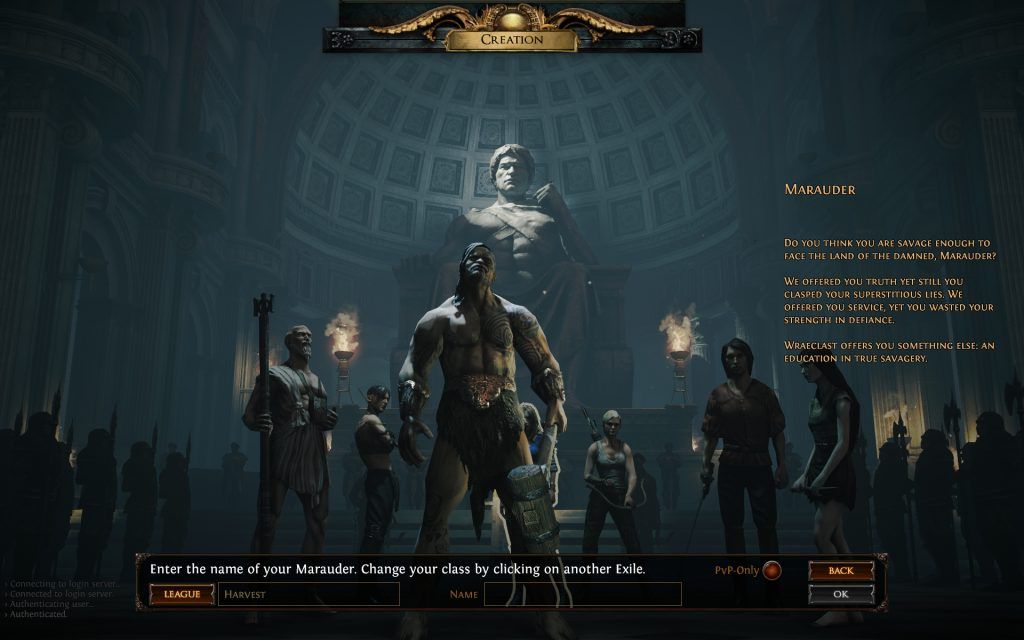
The Marauder is the king of strength. The starting position is to the west and slightly south of the middle of the skill tree. The Marauder has a focus on armor, life and melee weapons. If you want to use sword and board, two handed weapons or non-crit melee, he is probably your best bet. His ascendancy choices are: Juggernaut, Berserker and Chieftain.
Duelist
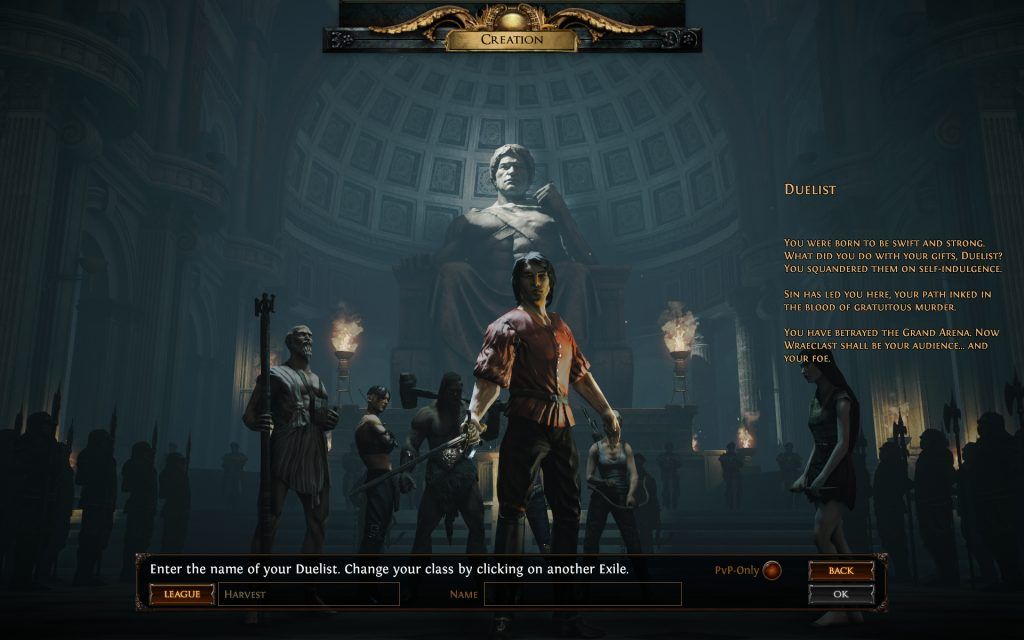
The Duelist is a hybrid of the Marauder and the Ranger. The starting position is directly south of the middle of the skill tree. The Duelist has a dual focus of strength and dexterity, which gives more flexibility on the use of melee weapon types. The Duelist can easily split defenses between armor and evasion, two handed weapons or dual wielding. His ascendancy choices are: Slayer, Gladiator and Champion.
Ranger

The Ranger is a pure dexterity based class located east and a little bit south of the middle of the skill tree. The focus is on bows or fast one handed weapons. Because the Ranger is focused on dexterity, the primary defenses are evasion, dodge and life. Her ascendancy choices are: Raider, Deadeye and Pathfinder.
Shadow
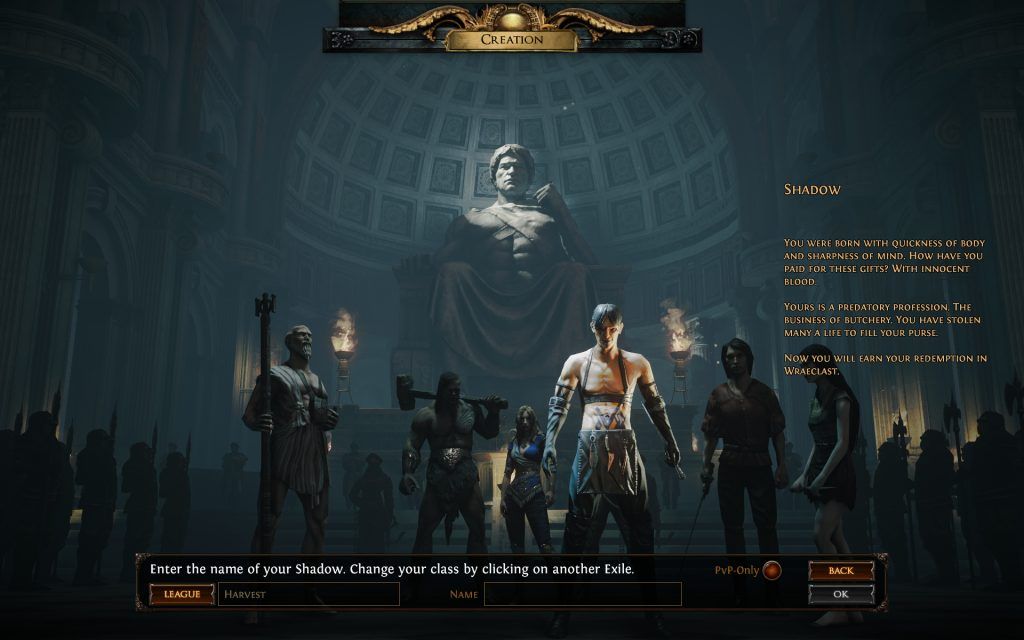
The Shadow is a class mixture of dexterity and intelligence. He is located to the east and a bit north of the middle of the skill tree. The Shadow focuses on traps, critical strikes or damage over time. Because the Shadow exists between the Ranger and the Witch, defenses can be a little bit more tricky to accomplish, as there aren’t a lot of life options and energy shield is a more complicated defensive mechanic. His ascendancy choices are: Assassin, Trickster and Saboteur.
Witch

The Witch is the pure intelligence based class. She is located directly north of the center of the skill tree. The Witch focuses on spell damage and summons. Because she is in the far northernmost part of the skill tree, she is often the choice for characters who want to use the Keystone Chaos Inoculation, which grants immunity to chaos damage in exchange for having only 1 life. In this case, the character would stack as much energy shield as possible. Her ascendancy choices are: Occultist, Elementalist and Necromancer.
Templar
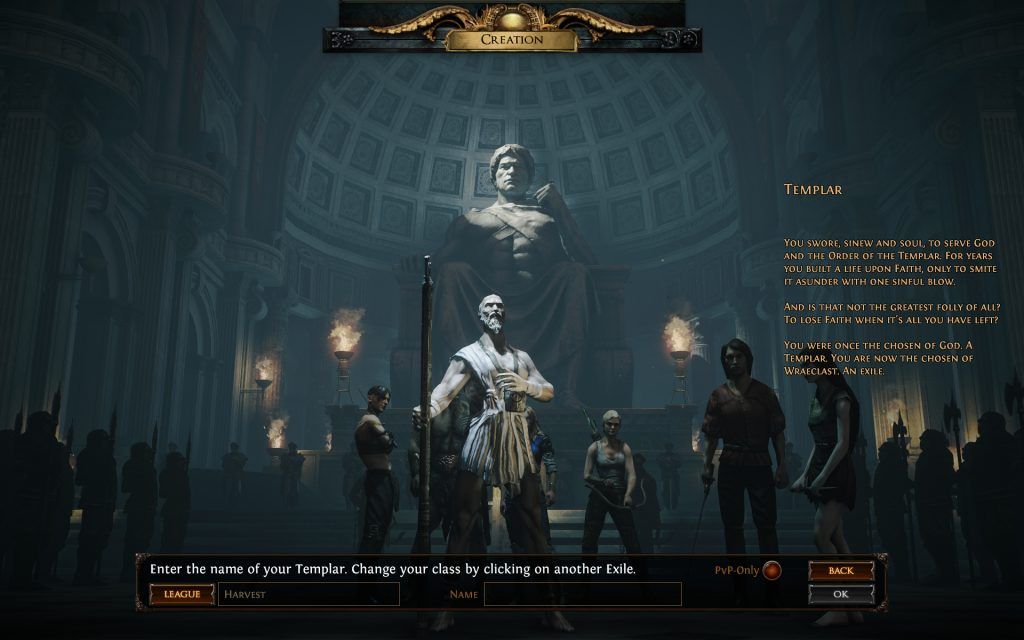
The Templar is a hybrid of intelligence and strength. He is located west and a little north of the center of the skill tree. The Templar focuses spell damage and totems, though he can also do two handed melee builds. The Templar’s defense focuses on either life or energy shield, armor and life regeneration. His ascendancy choices are: Inquisitor, Hierophant and Guardian.
Scion
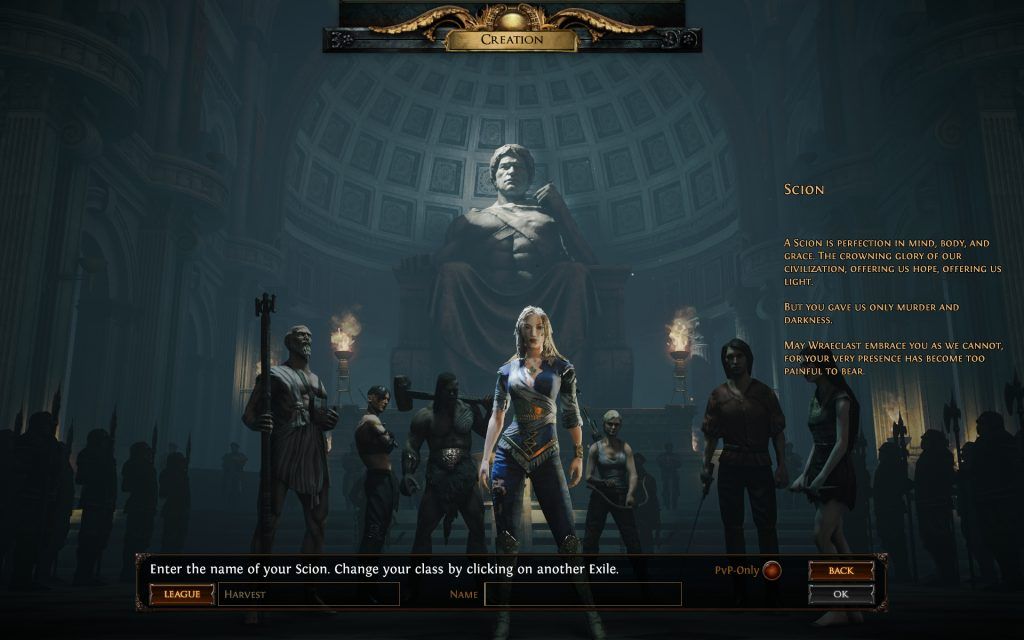
The Scion is an interesting class. It is the only class that is locked by default to new players of the game. This is largely due to her being a part of the storyline, but also because the Scion is one of the most “jack of all trades” classes. Think of it akin to the Druid class of World of Warcraft, where you can fulfill most roles depending on your build but are a weaker version of the original. The scion is located in the very middle of the skill tree. Because of these factors, the Scion has the ability to travel to any part of the tree, or even to two far sides of the tree more efficiently than the rest of the classes. The Scion only has one ascendancy class, the ascendant.
Ascendancies
Here are the real meat and potatoes of your build. You have picked your class, and that is locked in from the moment you pick a name and enter Wraeclast. You can change your passive skill tree nodes, you can adjust attributes, you can even swap ascendancies within your class, but typically you have this picked out by the time you unlock the first one around level 35. Ascendancies are unlocked as special points in pairs of 2 through completing the Labyrinth, with 4 total runs containing 8 total points by around level 75. Each set of points can dramatically increase the power and focus of your build. Let’s take a look at the whopping 19 ascendancy classes, their primary focus and some typical active skills that are used with each.
Juggernaut – Marauder
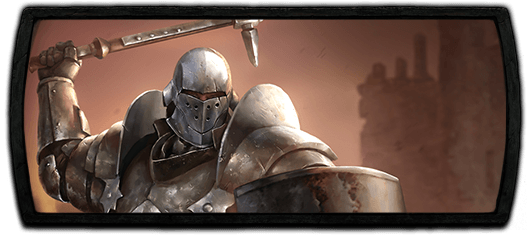
The Juggernaut is the premiere tank class. He has ample access to defenses, life regen and endurance charges. A few of his ascendancy points mimic keystone passives on the skill tree which can save a lot of points pathing to them such as for stun immunity or passive endurance charge generation.
Berserker – Marauder
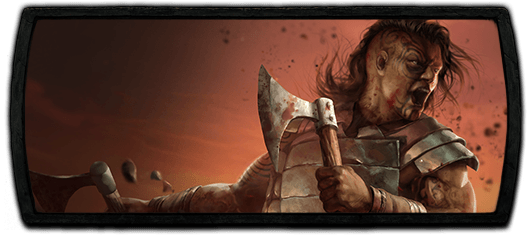
The Berserker is a high damage oriented ascendancy, focused on attacking quickly and building up a lot of damage. It is the only ascendancy with the option of built in life and mana leech, blitz charges for more attack speed, as well as other increases to both flat and more damage increases.
Chieftain – Marauder

The Chieftain is both the totem and fire themed ascendancy. Strength is tied to fire damage, and the Chieftain is more balanced between damage output and defenses than the prior two ascendancies.
Slayer – Duelist

The Slayer is focused on life leech, physical reflect immunity, and killing rare and unique mobs. The slayer is a balanced ascendancy which provides a nice set of bonuses related to area of effect, frenzy/endurance charges and increasing the base critical strike rating of low crit weapons to a respectable 7.5%. This allows for turning a low crit weapon of 5% to a viable critical strike build.
Gladiator – Duelist
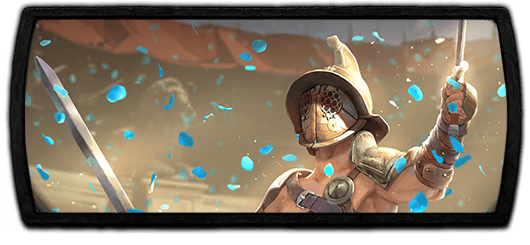
The Gladiator is the bleeding, block and challenger charge build, allowing for more attack and movement speed. Block is a strong defensive mechanic, and the Gladiator can most easily reach the maximum block of 75% out of all of the ascendancy classes.
Champion – Duelist
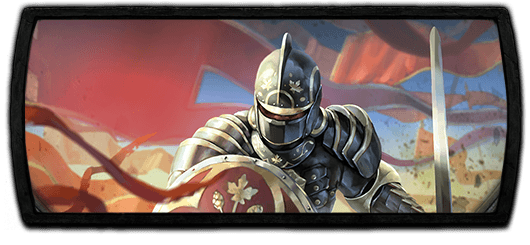
The Champion focuses on fortify, impale and taunt. This allows for a strong defensive mechanics especially in party play. Fortify reduces all damage taken by hits by 20% and impale allows for a scaling damage with each successive hit against a mob.
Raider – Ranger

The Raider is focused on frenzy charge generation, onslaught and elemental damage. Unfortunately, frenzy charges and onslaught can be obtained from other sources fairly easily which puts the Raider in a good spot early on, but damage can fall off later as compared to other ascendancies.
Deadeye – Ranger

The Deadeye focuses on projectiles, whether attacks or spells. She has the ability to gain pierce or chain, far shot and some other fairly hard to gain abilities that are mostly found on specific unique items.
Pathfinder – Ranger

The Pathfinder is focused on increasing flask bonuses and chaos damage, while providing elemental ailment immunity. If the Deadeye is the quick speed build, the Pathfinder takes it to another level while potions are active. Pathfinder’s largest drawback is the constant spamming of flasks which can get tedious, but is very powerful both defensively and offensively.
Assassin – Shadow
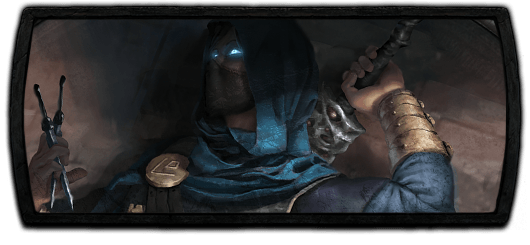
The Assassin is built around power charges, critical strike chance, critical strike multiplier and poison damage. If you want to land critical strikes reliably, the Assassin is probably the choice for you. If you want to do poison, which scales a bit differently, consider the Assassin or Pathfinder.
Trickster – Shadow
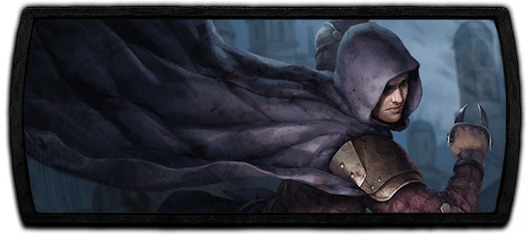
The Trickster is the most defensively focused Shadow ascendancy. The Trickster can reliably generate power and frenzy charges, can be built with a lot of dodge and energy shield, and has access to chaos damage or damage over time scaling. The trickster is popular for Hardcore characters who want to live on the east side of the tree because of these defensive options.
Saboteur – Shadow

The Saboteur specializes in traps, mines and blinding enemies, causing them to have a 50% chance to miss. Traps and mines are a unique way to change spells which also gives reflect immunity, similar to that of totems. It is a nice thing to have when you get to mapping later in the game so you don’t instantly kill yourself to reflected damage.
Occultist – Witch

The Occultist is the master of cold and chaos damage over time, curses and energy shield builds. This is a common choice for spell builds that want to go either Low Life or Chaos Inoculation. Having curses apply to curse immune mobs can be a huge boon both defensively or offensively depending on the curses chosen. This is a great choice for group play as well.
Elementalist – Witch
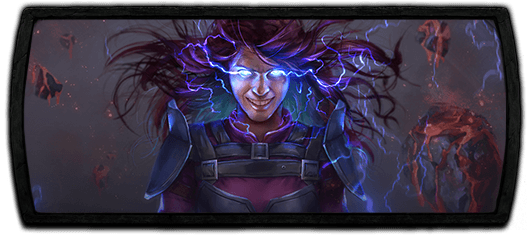
The Elementalist should be the master of elements, but in reality damage-wise the Inquisitor or Assassin reigns king. Instead, the Elementalist has some nice elemental spell leech, elemental penetration and GOLEMS! Yes, you can do a unique golemancer build, which is a golem specific pet build alternative to the necromancer. It is kind of niche, but still fun.
Necromancer – Witch

The Necromancer is primarily the pet build. Makes sense based upon the class name. There are multiple choices for minions: zombies, raging spirits, skeletons and a wide array of reanimated spectres. All of these minions can be scaled in different damage types depending on the use of uniques and passive skill tree nodes. It also can be an alternative support build through the use of stacking Commander of Darkness auras, Essence Glutton and Plaguebringer, though this isn’t as viable as it once was.
Inquisitor – Templar

The Inquisitor is typically a critical strike based elemental build, which also works around consecrated ground for bonus defenses. Instead of scaling critical strike off the ascendancies, you gain critical strikes ignore enemy elemental resistance. This is a huge damage buff so long as you can scale your critical strike chance and multiplier high enough through gear and passive skill points.
Hierophant – Templar
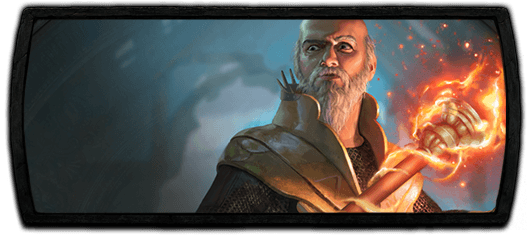
The Hierophant is the other totem focused ascendancy, alongside the Chieftain. He focuses more on total number of totems and any damage type, whereas the Chieftain was fire based. The Hierophant also has the ability to gain endurance and power charges. He also has some interesting mana reduction and scaling and damage taken as mana which works alongside the passive keystone Mind Over Matter.
Guardian- Templar
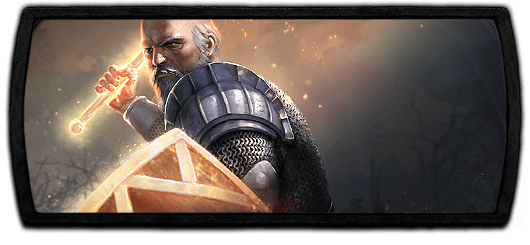
The Guardian is the Templar’s defensively oriented ascendancy. He can be made into an aura bot, a high block build and free onslaught/move speed/damage buffs. An aura bot is basically a character that grants massive buffs to damage and defense through the use of reserving mana and life, scaling energy shield and usually cursing through a curse on hit support gem.
Ascendant – Scion

The Ascendant is the Scion’s only choice for an ascendancy. It is a combination of a weaker version of the other ascendancies. You pick 2 out of all of the ascendancies. You even gain the ability late game to start at another classes starting position on the skill tree. The Ascendant is for advanced players or if you are following a build guide from the class forums.
Crafting and Orbs
Basic crafting in Path of Exile is fairly straightforward, use various orbs and the crafting bench in your hideout to modify a piece of gear. Advanced crafting techniques can yield extremely valuable returns, but are not covered in this guide. Try googling advanced crafting if that is something that interests you.
To talk more about crafting, we first need to start with orbs. Orbs in Path of Exile are the common currency. Unlike in other games like Diablo 3, there is no gold or centralized currency. The closest thing in PoE are Chaos Orbs and Exalted Orbs. Players have over time determined approximate exchange rates between the various orbs. Players sell gear in exchange for Chaos Orbs (cheaper end) to Exalted Orbs (expensive end). The second use of orbs is for various crafting depending on their effects. Here are a list of the most common orbs and their effects:
- Orb of Transmutation: Upgrade a white item to a blue item with 1 or 2 modifiers.
- Orb of Augmentation: Upgrade a blue item with a 1 modifier to add a second modifier.
- Orb of Alteration: Reroll a blue item with 1 or 2 new modifiers.
- Orb of Chance: Upgrade a white item to either a blue or yellow item, with a random amount of modifiers.
- Orb of Alchemy: Upgrade a white item to a yellow item with a random amount of modifiers.
- Regal Orb: Upgrade a blue item to a yellow item with a random amount of modifiers.
- Chaos Orb: Reroll a yellow item with all new modifiers and amount of modifiers.
- Blessed Orb: Reroll the values of the implicit (top 3) modifiers of a yellow item.
- Jeweler’s Orb: Reroll the number of sockets on an item.
- Orb of Fusing: Reroll the number of linked sockets on an item.
- Chromatic Orb: Reroll the colors of the sockets on an item.
- Orb of Scouring: Remove all modifiers from an item, turning it back into a white item.
- Vaal Orb: Corrupt an item with a chance at adding or changing the modifiers on an item. Corrupted items are difficult and expensive to modify further.
- Divine Orb: Reroll all the values of the explicit (bottom 3) modifiers of a yellow item.
- Exalted Orb: Add an additional modifier to a yellow item. These are exceedingly rare.
While the above list seems long, there are actually other types of items that can also be used in crafting. Fossils, essences, the crafting bench, alongside other methods allow for more advanced crafting and crafting options.
One last thing to note here, as you progress through the game, you will unlock crafting recipes. Recipes at the crafting bench add 1 additional effect to a piece of gear providing there are less than 6 modifiers on it. Use this method to fill in the gaps of what the gear is missing. Usually this would be to add either life, a resistance or energy shield to the gear.
Gems, Links and Colors

In Path of Exile, active skill gems are socketed, or placed, within worn gear to gain the ability to use that skill. Support skill gems are socketed alongside active gems to gain additional effects for that skill. Active and support gems must be linked together for them to work. Body armor and two handed weapons can have 6 links, other gear can have 4 links, one handed weapons and shields can have 3 links maximum. The more links on a piece of gear, the more valuable it is.
In the picture above, you can see a body armor with 5 links, one red active skill gem supported by 3 red and 1 green support gems. If these weren’t all linked, such as in the gloves, only the linked sockets will support the active skill. The gloves can have 1 green active gem supported by 2 red gems, or 1 red active gem supported by 1 green and 1 red support gem. The 4th socket can have an active skill gem in it, but it won’t be able to gain the effects of the support gems. The order of linking active and support gems doesn’t matter.
Gem colors are required to be matching for the active and support skills you want to use. Armor and weapons will naturally have a higher tendency to roll colors matching the base stat requirements. For example, a body armor that only has a strength requirement will tend to roll red sockets, green for dexterity or blue for intelligence. If it has a mixture of stat requirements, then it will be more likely to roll those mixed colors. This can make rolling “off color” items very difficult. Keep that in mind when deciding if you want to buy or use a piece of gear.
Trading
Trading in PoE is probably one of the worst aspects of the game. I only say this because there is no centralized auction house and it can be tedious as a lot of players could be afk, price fixing with no intention to sell, busy and don’t respond, etc. Also, trading is fairly dependent on the use of websites outside the game, which adds another annoyance to alt-tab out to find your next upgrade. Look below in the “Useful Community Tools” section to find the correct tools to improve your trading experience.
Useful Community Tools
Below are a short list of community tools that I use to improve my experience in Path of Exile:
- Path of Exile Wiki: The best resource if you aren’t sure what a skill does, if a support gem will work with a skill, learn more advanced mechanics such as the order of defense, etc. It can be found here: https://pathofexile.gamepedia.com/Path_of_Exile_Wiki. Be sure to use the search feature at the top right.
- PoE.Trade: The original and arguably still the best way to find that much needed upgrade. Before this site existed, you had to watch 8 billion lines of trade chat spam or search web forums for upgrades. It was a nightmare. Now you can put in all your search criteria, hit search and get a list of hundreds of matching results with prices. It can be found here: https://poe.trade/.
- Path of Building: The number 1 tool for designing your character ahead of time. You can look at the skill tree, gear, all stats, damage and pretty much any other useful information can be put in here to test if your character is viable before even starting. It is such a success, that the developers also use this. It can be found here: https://github.com/Openarl/PathOfBuilding/releases. Using this almost takes a mini-guide in itself, which I may write later on. Note that the community has taken over development and the most current version is the Path of Building Community located here: https://github.com/PathOfBuildingCommunity.
- PoE Trade Macro: A useful macro for determining more advanced stats/rolls on gear, dangerous mods on maps, ballpark prices on items and many other useful features. It can be located here: https://github.com/PoE-TradeMacro/POE-TradeMacro
- PoE Trades Companion: Another useful macro, this one makes trading a lot more efficient and easy. Single button clicks that can: invite someone who whispers you for a trade, ask them to wait if you’re busy mapping, inform them if an item is sold, and once the trade is complete say “thank you” and disband them from the party. Each of these actions is a single button click and makes one of the most tedious parts of the game, trading, much more tolerable. It can be located here: https://github.com/lemasato/POE-Trades-Companion.
- FilterBlade: FilterBlade is a tool to design a custom loot filter. The game by default has some basic loot filters installed, but having one that changes the looks more specifically to what your preferences are is nice, and a good loot filter is practically a requirement of PoE. It has a nice graphical preview of what the loot filter edits are doing too. It can be found here: https://filterblade.xyz/.
Outro
Thank you for reading through the guide. I realize that it is long and a lot to process. As I said in the beginning, Path of Exile is a complicated game with a lot of mechanics buried within it. With that said, my hope is that you have learned from reading this guide. It will not make you an expert, but it will give you a great start on your way to becoming a PoE veteran. Enjoy the game exiles!
